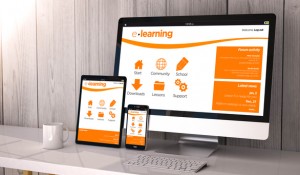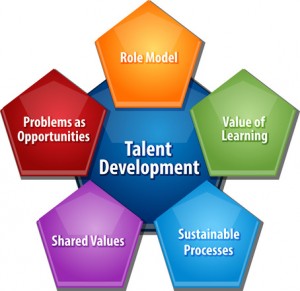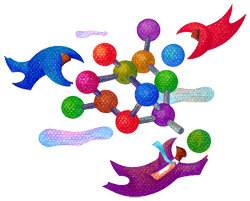5 Tips for Improving Your Decision-Making Skills
- Question Your Data. It’s OK to get data from another department or another colleague. But question what you are reading. Make sure you understand what the data is conveying. Then look at industry standards and research reports on the same information.
- Don’t Involve Your Emotions. When our emotions or egos get involved, we tend to make decisions for all the wrong reasons. Instead, put them aside. Focus on the facts and put the business need in the forefront.
- Don’t Delay your Decision. When a decision is big, we sometimes tend to delay our decision because it’s more difficult. Instead, put a block of time aside to do your research. Then consider the pros and cons of your decision.
- Understand The Consequences. As you come to your decision, consider the risks that can result. If the worst case scenario happens, what will be the outcome? If you know the possible outcomes, you may be able to mitigate the result. Thinking of them ahead of time will help you figure out possible solutions.
And what happens if the decision you make turns out to be wrong? First, don’t beat yourself up. Instead, review the decision-making process you employed and see if you can identify something that you missed. We’re not perfect, but if we can learn from our mistakes we can be wiser.
Career Growth – Who’s in Charge?
 Think about when you took the job you have now. Did you have a vision of where this job would take you? Has the job lived up to your expectations? Whether you’re close to being in the position you envisioned, or not, you can still get there. Your vision can be realized if you have the commitment to learn. The more you know, the more you are respected. The more you expand your boundaries, the more valuable you are to those around you. You can even widen your career opportunities.
Think about when you took the job you have now. Did you have a vision of where this job would take you? Has the job lived up to your expectations? Whether you’re close to being in the position you envisioned, or not, you can still get there. Your vision can be realized if you have the commitment to learn. The more you know, the more you are respected. The more you expand your boundaries, the more valuable you are to those around you. You can even widen your career opportunities.
Think back over the last 5-10 years and realize how your job has changed. It’s amazing, isn’t it? The skills you’ve acquired, the technology you’ve come to appreciate, the resources available to you – all of these factors are good reminders of just how important continual learning is. Change, as they say, is constant. If you feel stuck in your present position or if your career is not expanding as rapidly as you would like, you have to find ways to get additional learning.
How do you find ways to learn when you’re already feeling overwhelmed? First off, you have technology on your side. And secondly, realize that learning can be done quickly – you don’t need that big block of time anymore. Lastly, use all available resources. Here are some fairly painless ways to learn on your own time.
- Go online. There are courses you can sign up for. Research you can have access to. Blog articles abound – follow your favorite blogger. And then there’s YouTube – what CAN’T you learn through this site!
- Schedule something special for your break! Take the time to view a video or listen to a podcast. Devote a few hours every week and pick up some new knowledge!
- Schedule a brown bag session. Sharing courses or topics benefits all and saves money.
- Get wiser about your commute. Whether you’re in a carpool, on the metro or driving yourself, there’s a way to get informed. Turn on a podcast or pop in a CD from your local library. Download it to your iphone for the metro or carpool. You can even add video – as long as you’re not driving!
- Find an hour on the weekend Plan to watch a video, do some online research or browse the library. Chances are, once you get started the time will fly by.
- Take a walk. With today’s technology, get your exercise and expand your career at the same time by downloading a bit of professional training to your mobile phone.
- Learn as you watch your kids practice. Are you a soccer mom? Do you drive your kids to the basketball game? Instead of being bored watching practice, consider plugging into an online learning opportunity.
- Exercise your rights to learn at the gym! Listening to a CD, podcast or video will not only increase your knowledge, but make the exercise routine less boring.
Make it a Plan. The idea here is that one year from now, your knowledge, skills and experience should be greater than it is today. Write out your plan to get there and review it monthly.
Happier Work Life
 Going into the New Year we hear a lot of talk about getting in shape, eating healthily and making sure we exercise daily. Certainly that’s all well and good – especially after our indulgences of the holiday season. But maybe even more important is our mental well-being.
Going into the New Year we hear a lot of talk about getting in shape, eating healthily and making sure we exercise daily. Certainly that’s all well and good – especially after our indulgences of the holiday season. But maybe even more important is our mental well-being.
We are often defined by our work. Our work gives us structure and purpose. But what happens when you are sick of your job? Should you quit? While there comes a time when a job change is what we need, very often the fact that we are unhappy at work is the result of our own neglect. Perhaps it’s the routine of going to work every day. Or maybe it has to do with your long standing devotion to the work you do. It’s hard sometimes to shake the feeling of inadequate fulfillment at work.
What can we do? While there are all kinds of ways that you can make your job more interesting, or your attitude more positive (see our Tips for Being Happier at Work), our quest this month is to make that happier attitude a constant in your life.
Two things that are discussed frequently when it comes to work life satisfaction, include:
- Focusing on learning opportunities, and
- Reaching an intense state of focus.
According to a recent article by Fast Company, to achieve real happiness at work, we should focus on what we are learning in our job and building on that set of skills. There are a lot of ways we can go about building our knowledge base.
Research. Fortunately, we live in the internet era. You can find information online about any subject. Stick to known and reputable sites and you’ll likely find lots of information on the skill you are trying to build. And don’t forget to check out podcasts and videos. It’s amazing how much and how fast we can learn about a particular skill by listening to someone, rather than reading and re-reading articles and white papers.
Colleagues. Chances are, there’s someone in your business or association that has the skills you are interested in. Seek out mentors, colleagues and friends. Ask them to give you feedback and point you in the right direction. Having a few conversations can really help you hone in on the areas of development – and in the process, all that talk makes you more excited to learn.
Resources. There are lots of outside resources where you can take a seminar or workshop on a particular subject. These resources aggregate a lot on information, helping you make greater strides in a shorter amount of time.
The second tip for creating a happier work environment comes from a study done by the University of Chicago. The study examined peak performance and found that when individuals were able to reach an intense state of focus (often called “flow”) that they became completely engrossed in a project and free of external distractions.
The benefits of focus. This intense state of focus leads to a kind of euphoria – a mastery of the subject, if you will. The result is happiness, productivity and a new sense of learning. So how do we reach this intense state of focus?
Organization. The key to focus seems to be organizing your tasks and priorities with clear goals in mind that are reachable. As you meet and exceed these goals, focus increases, along with our confidence level. And as our confidence increases, so does our enjoyment of our work. We’ll even put more stress on ourselves to learn more, so desirable is this state.
Continuous enjoyment. There is evidence that we can continue this state of euphoria and focus by setting clear goals every day. Writing down our tasks, setting priorities and accomplishing these tasks are important to our enjoyment and focus.
If you or your organization needs help in the New Year with Individual Development Plans, give us a call. An IDP is critical and fast becoming mandatory in Federal Government for all employees. An IDP is a road map of mostly career goals (some personal goals) and contains a step-by step-action plan to achievement. Give LMJA a call at 301-670-0051, or email me at Leadership@lmja.com. Let’s put some time aside to discuss your needs.
Tip: 5 Tips for Being Happier at Work
 No matter how challenging and invigorating your work, we can all use a few ideas to clear our heads or get us thinking more positively. Try these on for size.
No matter how challenging and invigorating your work, we can all use a few ideas to clear our heads or get us thinking more positively. Try these on for size.
- Read daily affirmations. At the end of a weekly networking meeting, someone always has a positive quote for us. It works. We realize our capabilities and self-worth and it helps us stay motivated.
- Talk it out. I think this one works especially well for women – but don’t let that be your excuse to pass on this tip. Having a quick conversation with a friend, or setting the time aside to get a cup of coffee with a friend helps us work out difficulties.
- Conquering the big project. Sometimes just thinking about what’s on your plate can be overwhelming. The trick is to slice it up into several servings. Take the time to go over the project, decide what is needed, and break it up into smaller tasks.
- Go on silent. This is one of my favorite tips. Sometimes I just want to work my way through projects without interruption. Closing my door, putting my phone on silent, NOT opening my email – all of these tactics taken together give me a sense of power and ownership. I come away fulfilled.
- Don’t go it alone. Reach out to colleagues or friends. Talking over a project with someone else is sometimes all you need to make it clear in your own mind. And chances are, the person you talk to will even give you other ideas to consider.
Do you have a tip that works for you? Send us your tip by email and we’ll share in an upcoming blog post.
LMJA works with organizations, helping them focus on various challenges. If you need help with training or would like information on developing Individual Development Plans (IDP) for all levels of employees, give us a call at 301-670-0051, or email me at Leadership@lmja.com.
Effective Leading Starts with Listening!
 Remember when sales people used to push themselves on you? You’d go into a store and someone jumps right on top of you and starts telling you about the merchandise. It kind of makes you go wonky, doesn’t it? It’s very disconcerting and not very friendly. The first time I bought my own car it nearly rattled me. The sales person was mostly interested in getting a car off his lot than listening to me.
Remember when sales people used to push themselves on you? You’d go into a store and someone jumps right on top of you and starts telling you about the merchandise. It kind of makes you go wonky, doesn’t it? It’s very disconcerting and not very friendly. The first time I bought my own car it nearly rattled me. The sales person was mostly interested in getting a car off his lot than listening to me.
Thankfully, the better sales people have refined their trade. Instead of hanging all over you, they wait. They ask open ended questions. And they Listen.
The same holds true for leaders. Leaders who are interested in getting the work done understand that the key to success is enhancing the capacity and skills of those they work with. Leaders, in fact, coach. And in order to coach an employee to reach his/her highest potential, nothing is more important than how leaders listen, absorb what is said and give feedback.
Listening is a skill. It takes thought. We have to remind ourselves often to stop talking and just listen. Here are five rules to follow which will help develop the skill of listening effectively.
Listen with Interest. We’ve all had that occasion when we’re talking and yet clearly seeing that the person we’re talking to is not really listening to us. Instead, listen with the curiosity of someone who really is interested in what your employee is saying. Instead of thinking about what our feedback is going to be, stay focused on the topic. Keep interruptions to a minimum and move the conversation forward by keeping it on target.
Absorb what you hear. We can fake it sometimes. We can look like we’re interested but our minds are going elsewhere. Instead, take in what is being said. Register the emotion of the person who is talking to you. And be prepared to restate to the employee the discussion you’ve just had. If you do, you’ll stay in the conversation and not drift.
Restate the conversation accurately. Now, you’re showing the person that you really are listening. You not only demonstrate your commitment, but the person you’re talking to gets to “hear” how they sound. Is the message that was conveyed the message he/she really meant to convey?
Ask Questions. Asking questions promotes a fruitful dialogue. You’ve extended the conversation. And by asking open-ended questions, the person you are talking to might voice the answer you want to hear. In fact, you are empowering your employee to think it through. And you’re building their confidence.
Provide Feedback. Avoid preaching and bringing up past experiences. Instead, get clever. You want to be clear in your feedback, but you can also make it relevant and non-threatening. Make your feedback helpful and positive.
Are you a C1, C2, C3 or C4 communicator? LMJA can help your team self-identify their style and strengthen communication… and have fun! LMJA also help organizations with many common challenges – time management, project management, conflict management, strategic planning, to name a few. If you need help or would like to discuss your options, give us a call at 301-670-0051, or email me at Leadership@lmja.com.
Tips for Active Listening
 We all have times when we’re distracted. Or our emotions get in the way. Instead of listening, we find ourselves preparing a rebuttal. Here are some good tips for active listening. Try them and let us know how they work for you!
We all have times when we’re distracted. Or our emotions get in the way. Instead of listening, we find ourselves preparing a rebuttal. Here are some good tips for active listening. Try them and let us know how they work for you!
- Know your own communication style. If you are well aware of your style of communication, you’ll know what you need to do to create a lasting impression with other.
- Concentration. If you find it very difficult to concentrate on what is being said, try repeating their words mentally as they say them. This will help reinforce their message and keep you focused.
- Disturbance. If there is a “side” conversation going on in the office, move. Try a quieter room or find a spot in another part of the room.
- Repetition. Use reflective words so that your interpretation of the conversation is correct. For example, use words such as: “What I’m hearing is. . .” and “Sounds like you are saying. . .”
- Emotional Distraction. If you find yourself reacting emotionally to what someone said, admit it. Ask for more information or for better clarity.
- Interruption. Finally, allow the person speaking to you to finish each question before you answer. Don’t interrupt.
LMJA works with organizational challenges. If you need help or would like to discuss your options, give us a call at 301-670-0051, or email me at Leadership@lmja.com.
Where will you be, this time next year?
 It’s the beginning of a fiscal year. A year from now you’d like to look back on the last 12 months and be proud of what you’ve accomplished. Is that even possible in our changing environment? Can I create a plan that not only motivates me, but motivates all the people who work for me?
It’s the beginning of a fiscal year. A year from now you’d like to look back on the last 12 months and be proud of what you’ve accomplished. Is that even possible in our changing environment? Can I create a plan that not only motivates me, but motivates all the people who work for me?
I know what you’re thinking. . .
“Maybe if I owned my own business, I could make plans!”
“If I work with blinders on, maybe I can just keep pluggin’ away and not pay attention to all the changes happening around me.”
It’s not easy. In this changing world, is there any point in trying to plan? The answer is a resounding YES! But the planning has to be smart. Consider these points.
Set Priorities. As of today, what are the priorities of your organization? The basic priorities probably won’t change much over the year, so think high level priorities and write them down.
Focus Energy. In every job, there are lots of things we do that sap us of energy, but really don’t move the organization forward. So what we are talking about here, is focusing on the items that have more to do with the overall health of the organization, rather than your particular job.
Identify Resources and Strength Operations. Identify the high level priorities and decide where your energies should be spent. Look around your organization and beyond for resources that can help. Are there groups or departments who can help you strengthen your talents and accomplish a goal? Is there an individual with particular skills who can help develop those same skills throughout your department? Should you go outside your organization? Sometimes training is best accomplished by someone from the outside. A third-party resource may not have preconceived notions on what you should learn. Instead, outside resources are generally better at listening to you and coming up with the training customized to your needs.
Establish Common Goals. We all have different work to do, but our goals can be universal. Knowing what my part is in reaching a goal helps me keep on track. And measuring the activity leading up to the goal can remind me each month of the importance of the goal.
Assess and Adjust. When the organization takes a turn, you can adjust your priorities, energy, resources and goals. Chances are, you’ll only need to adjust them slightly, making everyone feel better about the change in the organization.
Measure Accomplishments. As each quarter winds down, focus on what you have been successful in achieving. On a daily basis, we sometimes feel like we’re going in circles. But when we look at a 3 month period, it’s fulfilling to see how far we’ve come.
Strategic planning depends on a disciplined effort that produces fundamental decisions and actions that shape and guide what an organization is, who it serves, what it does, and why it does it – with a focus on the future. Measuring action items is critical. See our tip on measuring strategic plans.
For more information on how Leah M. Joppy & Associates can be your resource for training, give us a call at (301) 670-0051. Or take a look at the training opportunities on our website.
Competency Modeling
 Is competency modeling part of your strategic plan? More and more organizations are using competency modeling to define successful performance in a particular work setting. Here’s an overview of competency modeling – what it means and what are the benefits of competency modeling.
Is competency modeling part of your strategic plan? More and more organizations are using competency modeling to define successful performance in a particular work setting. Here’s an overview of competency modeling – what it means and what are the benefits of competency modeling.
Competencies are individual characteristics. Competencies are often the basis for skill standards. They include the knowledge, skills, abilities, self-image, traits, mindsets, feelings, and even the ways of thinking with regard to appropriate roles. These competencies lead to a desired result – they contribute to exemplary performance that in turn, creates an impact on the outcome of the organization.
In short, a competency is the framework for defining the skill and knowledge requirements of a job.
What is a competency model? A competency model is a list of characteristics that together define successful performance in a particular work setting.
Competency models can be developed for specific jobs. They are widely used in various industries to define and assess competencies – in both hard and soft skills.
How does competency modeling differ from job analysis? The aim of competency modeling is not to summarize how a job has been performed in the past, but rather to identify the behaviors that will be needed to achieve long-term strategic goals. In this sense, competency modeling is forward looking and not rooted in the past.
What are the benefits of competency modeling. Competency models are considered valuable by various organizations to define skill and knowledge requirements of specific jobs, to assess competencies and performances, and help set business strategy. They also help reveal strengths and weaknesses – which help form the basis for training programs and learning content, both formal and informal.
In general, organization that adhere to competency modeling report:
- Greater alignment with business objectives.
- Enhanced productivity.
- Increased workforce nimbleness.
- Improved ability to identify and develop high achievers.
- Better retention of top talent. |
Experts also recommend that competency models receive sponsorship from senior leaders, are aligned to the organization’s business strategy and culture, are based on research and are tied to talent management practices.
For more information on Competency Modeling and Training, contact LMJ&A at leah@lmja.com. We can help your organization successfully employ competency modeling in the workplace. Working with you step-by-step, we will support and guide your organization through each component of the process. Give us a call at 301-670-0051.
TIP: The Elements of a Competency Model
Though the elements of a model vary, there are usually three main components.
- A title and definition. A title might consist of “Being a team player.” The definition should describe what a team player should be. Descriptions could include “Treating others with courtesy, Working to resolve conflicts, etc.”
- Descriptions of activities or behaviors. Link the description to the competency. In this case, what are the activities and behaviors of a team player? The list might include “Capitalizing on strengths of others, Motivating others to contribute, etc.”
- A diagram of the model. A diagram helps everyone visualize the competency and grasp the model. You can see various models diagrammed on this page.
For more information on Competency Modeling and Training, contact LMJ&A at leah@lmja.com. We can help your organization successfully employ competency modeling in the workplace. Working with you step-by-step, we will support and guide your organization through each component of the process. Give us a call at 301-670-0051.
Finding Purposeful Work
 My friend Rachel always told her kids that they would probably have 3-4 careers during their lifetimes. Having worked in the same field my entire life, that always seemed like odd advice. It felt to me that she was giving her kids the privilege to jump around, to try different jobs and different companies. Would they ever settle down? I mean really, what’s wrong with one line of work?
My friend Rachel always told her kids that they would probably have 3-4 careers during their lifetimes. Having worked in the same field my entire life, that always seemed like odd advice. It felt to me that she was giving her kids the privilege to jump around, to try different jobs and different companies. Would they ever settle down? I mean really, what’s wrong with one line of work?
Somewhere along the way, I discovered what she meant. Rachel always strived to find meaningful work. For her, meaning and purpose are core motivators. That thinking is validated by Daniel Pink, author of “Drive” whose book examines 50 years of behavior science to get at the real truth around human motivation. Rachel has always been wired to find work that is meaningful. Now, I wanted that. My job had become less than satisfying and I wanted to feel like I was doing something important.
I mentioned my struggle to Rachel and she said, “Try something different!” She said to me that she thought people changed as they went through life. Things take on different levels of importance during different times. And that’s why she told her kids that they would probably have more than one career. Finances take on different meanings. Families change. Our needs change. And our values change too. We want our jobs and our lives to take on different meanings.
It’s true, that trying something different can have drastic results. We have responsibilities. Most of us need to be fiscally responsible. We can’t just “check out!”
What is meaningful work? I had to do a bit of soul searching. What was I looking for? I thought that meaningful work meant being paid for work that I love. And in my case, that meant creating value for others. I wanted to gain the respect of my peers and find value in what I do. Meaningful work, I was sure, would make me happy. Here’s what I learned.
Rungs Of A Ladder. Finding meaningful work can be a process. For some, it may mean that we take on a second job, or we volunteer after work. We find something that we are passionate about – something that gives us pleasure and makes us feel good about ourselves. The rungs of a ladder work parallel to each other. This is true of our job and our purpose in life. For most of us, as we seek meaningful work, what we do for a living and what we are passionate about often run parallel to each other. But as we strive for meaningful work and focus on our vision, they often merge.
What if you haven’t found purposeful work yet? How do you start? Is it possible to find meaningful life without quitting your job? Finding meaningful work is a process. There are things we can do to help us determine what is purposeful.
- Take time to stop. Think about what you are doing and whether or not it satisfies your need to provide value.
- Rethink your position. As we grow, as we age, things shift. You may find that what was very important at one time, is no longer important. Is your job still purposeful?
- Know that your search for meaningful work may not be a straight path. We have obligations we can’t ignore. We may be pressured to follow a certain path. And we may be competitive – with ourselves and others. The trick is to exercise patience and don’t give up.
- Tune into the mission of your work / organization. Depending on the mission, you might see something that is essential for enhancing your purpose in life.
- Set reasonable goals and then realize what you’ve accomplished, even if it’s taking longer than you wanted.
- Perform random acts of kindness. Helping someone lifts a mood and adds purpose. That might mean taking a meal over to a family where someone is going through medical issues. It might mean helping a co-worker on a project.
- Take time for mental thinking. Focusing on the future and planning your next move help to keep us on track.
- Develop a code of ethics to live by. Establish values you can uphold.
- Volunteer a portion of your time to something you are passionate about.
The steps we take now help us stay more positive. And as we become more positive, we leap over obstacles.

